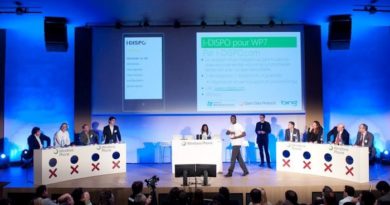Calendly – Startup Story – Tech Unicorn- Bootstrapped & Outsourced programming to a dev shop.
Calendly is not your typical silicon valley success story, they did everything that the silicon valley “Pros” tell you to not do. Calendly bootstrapped and hired a dev shop in eastern Europe, instead of selling equity for cheap to get seed funding and pay 5-10x to hire a developer to build the product locally. Tope Awotona kept a huge percentage of his company instead of being required by investors to find a cofounder who will take another 30-50%. Calendly played smart, and succeeded in rubbing it off in the faces of the silicon valley aficionados.
The meteoric rise of Calendly is the stuff of legend. In 2013, Tope Awotona, a former EMC salesperson, had had enough of the headache that scheduling sales calls had become. He was a man on a mission, and he knew he had to take matters into his own hands. So, he bootstrapped his startup using his own savings and a small-business loan while working at Atlanta Tech Village. And, oh boy, did it pay off!
With the help of the Kyiv-based software development outsource company, Calendly took off like a rocket, securing a seed investment of $550,000 in late 2013. And, as the icing on the cake, the software began as a freemium version for individual users, before adding a premium version in late 2014.
Fast-forward to 2021, and Calendly was making waves in the investment world, raising a staggering $350 million from OpenView Venture Partners and Iconiq, valuing the company at a reported $3 billion. And when the pandemic hit, Awotona took swift action, closing the company’s Atlanta headquarters and taking the team remote.
But that’s not all folks! In 2022, Calendly’s meteoric rise hit new heights when a Silicon Valley entrepreneur took to Twitter to criticize the etiquette behind sending a Calendly link. Yet, true to form, Calendly’s legion of supporters rallied to defend the process, leading to a huge spike in sign-ups. And, as if that wasn’t enough, Wired Magazine reported that Calendly’s software is a market leader. Calendly has truly become a force to be reckoned with, and Tope Awotona’s vision and determination have earned him a spot among the most successful entrepreneurs of our time.
Few really interesting things about this story and a few things that Tope did in the early days to get 2,000 users. So, for those who aren’t familiar Tope, our CEO and founder started his career in sales and he spent lots of years in sales. And so, he was very used to the challenges of trying to organize external meetings with prospective customers. So, he knew the problem space really, really well. And he had evaluated all the scheduling solutions that were on the market and came to conclusion that there really weren’t any great products out there and especially there weren’t any great products for the recipient of the actual booking service. And so, I think he saw this as an opportunity for disruption. So, he raided his 401k, he took out all his savings. He didn’t make raise any money. And he hired an outside development firm actually in out of the Ukraine to build the first version of Calendly. So, that’s the background on Calendly.
Annie Pearl – CPO at Calendly
How did Calendly get it’s first 1000 user ?
- Free product.
- Viral loop, that by default transform the user into an evangelist.
- Great product, that addresses and resolves a pain point.
- Found power-users, that were able to reach many users in a short time.
The first 10 users were actually customer success agents at a company in the education space that contracted with the same firm that Tope was using to build Calendly. So, he really found his first set of users through the firm that he was using to build the product. And then, those CSMs or customer success managers were actually using Calendly to schedule calls with parents in K through 12 education. And so, then those parents started using Calendly for their own parent-teacher conference scheduling. And then from there, the school started using it and then all the parents within the school started using it for lots of other use cases and it grew organically from there. So that was one piece. I think the other piece that’s really important is that he started off by just having a free tier. The entire product was free. Some of this came from honestly not being able to actually build the billing infrastructure that would be required to actually charge. So, it came a little bit out of necessity, but it was also free. So not only was it a better product than the alternatives out there, but it was also free. So, the combination of the viral loop and coming in through getting those first 10 users as part of the firm he was using and then the free aspect or I think what led to the first 2,000, and then 10,000, and millions of users from there.
Annie Pearl – CPO at Calendly
Failing to implement







